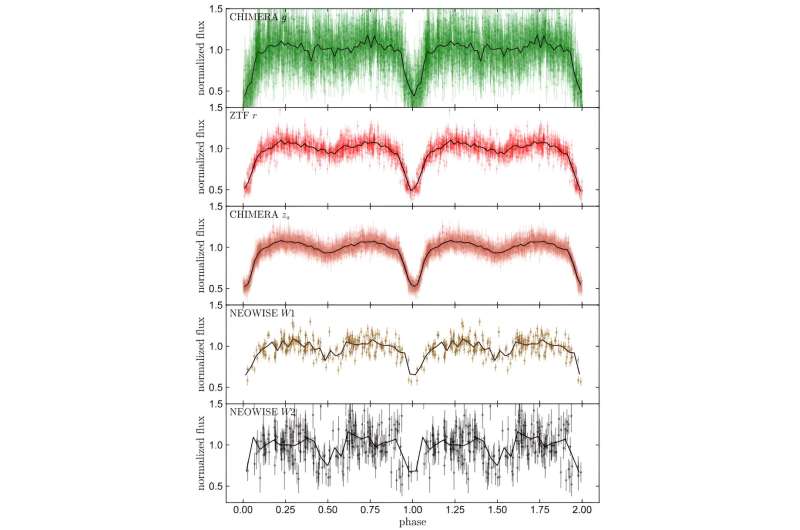August 13, 2023 report
This article has been reviewed according to Science X's editorial process and policies. Editors have highlighted the following attributes while ensuring the content's credibility:
fact-checked
preprint
trusted source
proofread
New massive brown dwarf discovered

Astronomers report the discovery of a new massive brown dwarf using the Zwicky Transient Facility (ZTF). The newly detected object is about 80 times more massive than Jupiter and orbits a low-mass star. The finding was detailed in a paper published July 28 on the preprint server arXiv.
Brown dwarfs (BDs) are intermediate objects between planets and stars, occupying the mass range between 13 and 80 Jupiter masses (0.012 and 0.076 solar masses). Although many brown dwarfs have been detected to date, these objects orbiting other stars are a rare find.
Recently, a team of astronomers led by Kareem El-Badry of the California Institute of Technology (Caltech) has found such a rare brown dwarf. During a search for low-mass eclipsing binaries, they detected a system consisting of an M-dwarf star and a brown dwarf, which received designation ZTF J2020+5033.
"This paper presents the discovery of a BD in a binary with an orbital period much shorter than any such system discovered to date. The discovery was enabled by the Zwicky Transient Facility (ZTF), which provides high-quality light curves for stars significantly fainter than other surveys that have been used to detect transiting BDs thus far," the researchers explained.
The brown dwarf in ZTF J2020+5033 is the size of Jupiter but its mass is about 80.1 times greater than the solar system's biggest planet, which places it at the stellar/substellar boundary, slightly below the hydrogen burning limit. The object's effective temperature is estimated to be 1,691 K.
The star in the system is an M dwarf of spectral type M6, with a radius of 0.176 solar radii and a mass of 0.134 solar masses. The effective temperature of this star was found to be 2,856 K.
According to the study, the binary is located approximately 445 light years away from the Earth. The age of the system is estimated to be between 5 and 13 billion years, and its orbital period was measured to be only 1.9 hours—making the smaller component the shortest-period known transiting brown dwarf.
The astronomers noted that with such a short orbital period, ZTF J2020+5033 is also much more compact than other known binaries with transiting brown dwarfs.
"Both components must have been significantly larger when they were young than they are today, implying that the orbit has shrunk significantly by magnetic braking. This strongly suggests that magnetic braking remains efficient below the fully convective boundary in at least some stars, contrary to the common assumption in many binary evolution models," the authors of the paper concluded.
They added that ZTF J2020+5033 is closer than 34 of the 39 other known systems with transiting brown dwarfs, which suggests that BDs in short-period orbits are not particularly rare.
More information: Kareem El-Badry et al, A transiting brown dwarf in a 2 hour orbit, arXiv (2023). DOI: 10.48550/arxiv.2307.15729
Journal information: arXiv
© 2023 Science X Network





















